Review: 2011 Ford F-250 Diesel

With Dodge decidedly losing the torque-war in the heavy duty pickup truck segment, it’s up to Ford and GM to battle out the pickup truck war of the decade. In this corner we have the 2011 Ford F-250 Super Duty Diesel sporting the lightly retuned 6.7L turbo engine that is currently king of the pickup truck hill at 800ft-lbs. For 2011, Ford decided to drop the problematic 6.4L Navistar diesel engine in favor of an all-new, all-Ford 6.7L twin turbo V8 cranking out 400HP and an incredible 800lb-ft of torque. Connected to the ground via Ford’s 6R140 heavy-duty TorqShift six-speed automatic transmission, the amazing feat of engineering is not that the engine can make this much twist, but that the transmission can take it.
From the surface the F-250 strikes a very bold presence. This truck is seriously large. I parked next to two older Fords during a jaunt to Lowes and ye olde F-250 and F350 look like Tonka trucks in comparison. Matching the curb presence of the Superduty is the super-duper price tag. Starting at $28,020, our tester tipped the scales at $54,605. And diesel lovers will need to have especially deep pockets to see the King, depending on option packages the diesel is at least a $7,835 option. As Mel Brooks said: “it’s good to be the king.”
When you step inside the F-250, you realize that while Ford is spending big bucks improving the quality and feel of their passenger car interiors, relatively little is being spent on work vehicle interiors. Sure the interior of the F-250 looks butch, but for a vehicle that can easily cost more than any Lincoln it’s a pity that the F-250, even in decked-out King Ranch trim, still sports the same hard and nasty plastics on the inside as a Chrysler. That being said, there is a reality that a work truck needs to be capable of being ridden hard and put away wet, so perhaps an interior “Made Like Rubbermaid” finally does have a place. In all honest truth the Ford interior is just as good as the Dodge 2500, but somehow I expected more. King Ranch buyers beware; your edition doesn’t get any better dashboard components. While function over form may be good for most aspects of the interior, the steering wheel scores low marks with my personal scale. All the right functions are available on the steering wheel, but the controls surfaces are angled awkwardly making their use uncomfortable in the long term. In comparison, the GMC 2500HD has a very carlike interior, cheesy-fake-wood and all. While I appreciate the car-like styling, it both clashes with the work theme of a truck for me and yields no positive tactile feedback.
Before we delve into cargo hauling we should explore what exactly truck numbers and models mean these days. Once upon a time a truck shopper had really three options: half-ton, three-quarter-ton, or a one-ton pickup truck (F-150/F-250/F-350 in Ford nomenclature). The name refers to the payload capacity of the truck, and of course in our automotive world progress has meant that shortly after the names were coined, payload capacities started increasing every year. You can now expect a half-ton pickup to be rated to safely carry three-quarters of a ton or more in this century. Ford’s own three-quarter-ton F-250 when properly spec’d out will haul over two tons (4,080lbs), the F-350 with a single rear axle will haul over two tons (4,700lbs). If duallies are your thing, the F-350 will bring home some serious bacon with a whopping three-and-a-half tons (7,070lbs) of cargo hauling capacity. Counter-intuitively, the F-450 delivers a modest two-and-a-half ton (5,200lbs) cargo capacity as it is tuned primarily for towing.
Class leading payload and towing numbers are great, but the little known detail about these ratings is that it all depends greatly on what options you tick when you’re in the showroom ogling your future cowboy Cadillac. Our tester F-250 sported a much lower cargo capacity of 2,006lbs according to the door label due primarily to the 4WD option, short bed, crew cab and large shiny chrome wheels. Buyers keep in mind that the tire selection often has more to do with your cargo capacity than other options so if you need to haul some crap, you’d be best served with the small boring wheels and lots of rubber. Of course as with most drivers I didn’t look at the door label until we’d overloaded the F-250 with 3,360lbs of concrete. Oops.
Out on the road, the F-250 is a confident vehicle. While adjectives like sporty will never be applied to any large pickup, the F-250 was surprisingly agile on the road, loaded or not. Unladen, the F-250 and F-350 exhibit more jounce on uneven road surfaces than the GMC 2500HD, but with some weight in the bed the truck feels more “planted” than the GM.
As our test truck was equipped with a factory Class IV receiver with integrated trailer brake controller and both 4-pin and 7-pin trailer plugs, we decided a home improvement run was in order. Our hauling test included the F-250, 2,880lbs of concrete and a mixer in the bed, a 1,680lb trailer loaded with 3,360lbs of concrete and 2,100lbs of cinder blocks plus yours truly behind the wheel. This all adds up to 16,758 which is as close as we could get to the rated 20,000lb GCWR of the F-250. For a vehicle combo that weighed in at over 8 tons, the F-250 accelerated briskly with not so much as a harsh shift to accompany the linear thrust. Ford cites the extremely low 3.96:1 first gear as the reason take-offs with a heavy trailer are so effortless, after a week in GM’s 2500HD I am inclined to believe Ford (the GM Allison’s first gear is 3.1:1 in comparison). While I would hesitate to call the F-250 fast (our tester ran to 60 in 9.0 seconds), adding a few tons in the bed does little to dampen the feeling of the vehicle. Turbo lag is almost absent, unusual for a large diesel V8 which makes the Ford diesel feel faster than the GM despite the GM 2500HD running to 60 slightly faster.
Owners that frequently haul large loads will appreciate the amount of control Ford allows over the new 6 speed automatic transmission. In addition to the requisite “full-manual” control you can also limit the gear range, or just cause the dash-display to show your current gear, a feature I found particularly handy. It’s these small features that make the Ford F-250 a great work companion, the integrated step in the tailgate, auxiliary switches in the dash for your electrical equipment, and a wide variety of Ford warranted accessories to choose from. As this is essentially a new transmission for Ford, reliability is an unknown especially with the stump-pulling torque the Scorpion V8 can dish out.
During our week with the F-250 we averaged 18.2MPG, slightly higher than our week with a similarly configured Ram 2500 and GMC 2500HD under similar conditions. The downside to the Ford diesel’s mileage numbers is that the Ford is the only three-quarter-ton truck that uses urea injection to reduce NOx emissions adding an extra layer of expensive and complexity to the picture. That being said, when the job is finished, it’s hard to go wrong with the F-250. The combination of class-leading power, excellent payload numbers and the often-lauded Ford SYNC system, the F-250 is a great truck to drive to work every day, whether that’s in the city or on a construction site.
Readers who are following TTAC on Facebook were given the opportunity to ask reader questions of the F-250. If you would like to ask questions of car reviews in progress, or just follow TTAC, checkout our facebook page. FB fans, here are your answers: David B: The transmission is a willing dance partner. Soren L: Fairly long. Richard S: Urea consumption is hard to figure, I am told that you should estimate an additional 2% on-top of diesel to compensate for the urea. Jake T: better; you run over the baddies. Tony J: Nope, this diesel is totally smoke-free and the exhaust doesn’t even really smell “diesel.”
Ford provided the vehicle, insurance and one tank of diesel for this review.

More by Alex L. Dykes
Latest Car Reviews
Read moreLatest Product Reviews
Read moreRecent Comments
- Kwik_Shift_Pro4X Thankfully I don't have to deal with GDI issues in my Frontier. These cleaners should do well for me if I win.
- Theflyersfan Serious answer time...Honda used to stand for excellence in auto engineering. Their first main claim to fame was the CVCC (we don't need a catalytic converter!) engine and it sent from there. Their suspensions, their VTEC engines, slick manual transmissions, even a stowing minivan seat, all theirs. But I think they've been coasting a bit lately. Yes, the Civic Type-R has a powerful small engine, but the Honda of old would have found a way to get more revs out of it and make it feel like an i-VTEC engine of old instead of any old turbo engine that can be found in a multitude of performance small cars. Their 1.5L turbo-4...well...have they ever figured out the oil dilution problems? Very un-Honda-like. Paint issues that still linger. Cheaper feeling interior trim. All things that fly in the face of what Honda once was. The only thing that they seem to have kept have been the sales staff that treat you with utter contempt for daring to walk into their inner sanctum and wanting a deal on something that isn't a bare-bones CR-V. So Honda, beat the rest of your Japanese and Korean rivals, and plug-in hybridize everything. If you want a relatively (in an engineering way) easy way to get ahead of the curve, raise the CAFE score, and have a major point to advertise, and be able to sell to those who can't plug in easily, sell them on something that will get, for example, 35% better mileage, plug in when you get a chance, and drives like a Honda. Bring back some of the engineering skills that Honda once stood for. And then start introducing a portfolio of EVs once people are more comfortable with the idea of plugging in. People seeing that they can easily use an EV for their daily errands with the gas engine never starting will eventually sell them on a future EV because that range anxiety will be lessened. The all EV leap is still a bridge too far, especially as recent sales numbers have shown. Baby steps. That's how you win people over.
- Theflyersfan If this saves (or delays) an expensive carbon brushing off of the valves down the road, I'll take a case. I understand that can be a very expensive bit of scheduled maintenance.
- Zipper69 A Mini should have 2 doors and 4 cylinders and tires the size of dinner plates.All else is puffery.
- Theflyersfan Just in time for the weekend!!! Usual suspects A: All EVs are evil golf carts, spewing nothing but virtue signaling about saving the earth, all the while hacking the limbs off of small kids in Africa, money losing pits of despair that no buyer would ever need and anyone that buys one is a raging moron with no brains and the automakers who make them want to go bankrupt.(Source: all of the comments on every EV article here posted over the years)Usual suspects B: All EVs are powered by unicorns and lollypops with no pollution, drive like dreams, all drivers don't mind stopping for hours on end, eating trays of fast food at every rest stop waiting for charges, save the world by using no gas and batteries are friendly to everyone, bugs included. Everyone should torch their ICE cars now and buy a Tesla or Bolt post haste.(Source: all of the comments on every EV article here posted over the years)Or those in the middle: Maybe one of these days, when the charging infrastructure is better, or there are more options that don't cost as much, one will be considered as part of a rational decision based on driving needs, purchasing costs environmental impact, total cost of ownership, and ease of charging.(Source: many on this site who don't jump on TTAC the split second an EV article appears and lives to trash everyone who is a fan of EVs.)




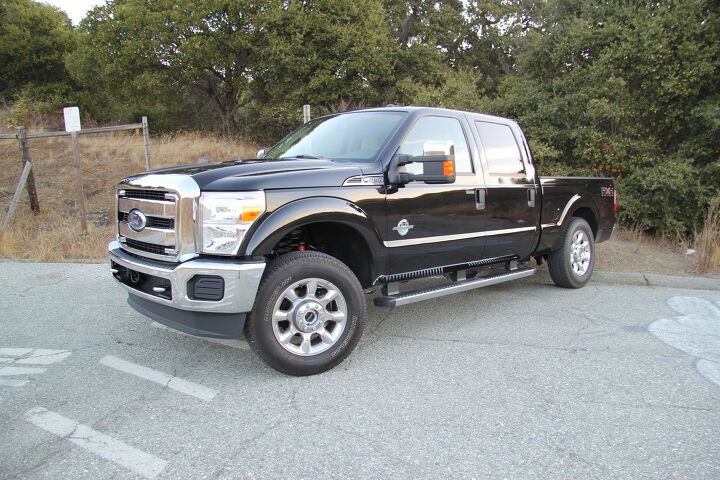





































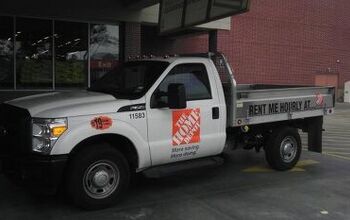
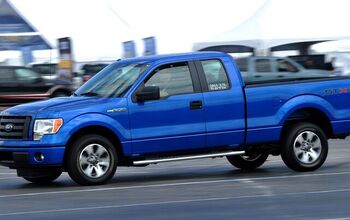

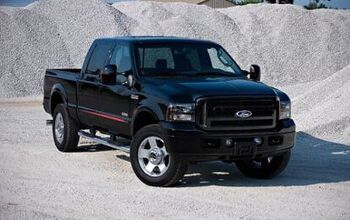
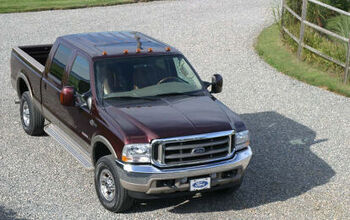










Comments
Join the conversation
Did you try opening the hood fully? And then try to reach up and close it? Give it a try. If you are under 6 feet tall you probably cannot do it.
Nice review. Interesting comments. Me ? I have a '89 F250 4x4, 5-speed manual, XL, strippo version, no a/c, crank windows, and a noisy 7.3L IDI non-turbo engine. Best thing going. Will pull anything. Go thru anything. A lot less stuff to break down. It sure wakes the neighbours up when you start on a cold day ! I am amazed at how loaded up these "work" trucks have become. The other amazing thing is how expensive diesel trucks are to repair. I do most of my own work. But the price list at the dealer for regular mtce stuff is exhorbitant. Ouch.